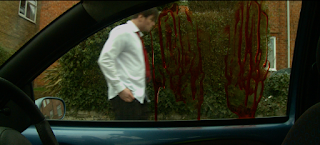Title
- Choose a title for your film - Usually you agree a 'working title' until the film is progressed to the point where a final title is agreed. Title is important as it-
- Sells your film to it's audience - 'Tease'
- Encapsulates what your film is about
- Focuses you as a producer/director on the real meaning of your film
- Adds meaning to your film – ‘double entendre’ common e.g. One Born Every Minute – new conventions re: blunt literal titles e.g. The Boy Whose Skill Fell Off
The Treatment
A treatment outlines HOW we intend to tell the story and will include main characters or interviewees, locations or planned locations, style/format/narrative structure and whether or not we intend to use a reporter/presenter and how that benefits the documentary.
A treatment doesn't need to be more than a page but won't be any more than 3 or 4. Unless you're sending it through the post don't make it more than 1 page.
A treatment can also include:
- Transmission ('TX') Time and channel/platform
- Target audience
- Whether it is stand alone film, part of an existing strand or series or split into parts to form a new series.
Documentary Scripting
When you're writing a script for a doc, you can utilise the following:
- Sequences
- Interviews
- Reconstructions and dramatisations
- Actuality
- Cutaways/GVs
- Sync
- Commentary
- Music
- Archive/stills
- Graphics
- NB documentary films should be as much about the
pictures as any other film – SHOW ME AND TELL ME,
DON’T JUST TELL ME!
The script needs to be done prior to the filming just like for a drama, series, etc. as this forms a template for your finished film. It should be informed by your research and allow you to effectively think through your film's picture and sound content and a basic structure.
It is know as a A/V Script (Audio and Visual Script)
- e.g. Write COMM or V/O for commentary
- Write SEQ for sequence
- Write ACT for actuality
- Write C/A for cutaway
- Write SYNC for interview clips
- Write SFX for sound effects
- Commentary – is usually made distinct by
being written in italics/in bold – also helps
during voice over record if they are numbered
- Line and a half spacing – makes it easier to
read!
- Finding a narrative for your documentary is
essential
¡
- A central thread of some kind which will hold your
story together e.g. Day in the life/Journey of
exploration
- The central thread could involve the process of
investigating the answer to a particular question
or theory
- The film’s narrative is influenced by the
characters, location, period of time it is covering
and the events presented.
- BEWARE – time based narratives cannot be
fractured – ensure you check the logic of your
story and keep to it!
Documentary Structures, 2 types
Actuality driven
- This is a term used to describe more observational type films
whose structure and storytelling develops around what happens –
the developing of events drives the story and provides the
narrative e.g. One Born Every Minute/Cops with Cameras
Sequenced documentary films
- Have a more ‘polished’ feel and are typically more formatted
pieces e.g.Who do you think you are?’ (although this also is driven by the “actuality” of a journey of discovery)
- The choice as to whether your film is entirely actuality
driven, partially actuality driven or completely scripted
depends on the subject, type of programme/series and
audience
- The filmmaker will also potentially have their own views on
this based on preference/style/’morals’

















































